 Plants need nutrients, just like we do.
Plants need nutrients, just like we do.
But you can’t just put a juicy cheeseburger next to your little weed plant and expect it to dig in.
So what do plants eat, exactly.
And how do you provide them with the food they need?
This guide will cover everything you need to know about cannabis nutrients.
You will learn the different nutrients plants need, when they need them (their requirements change as the move through the various stages of growth), and how to monitor your plants to make sure they are getting enough nutrients, but not too many.
Contents
Cannabis Nutrient Guide
We will begin this guide by looking at the different nutrients plants need, before getting into the amounts they need, in relation to other nutrients.
Important Soil Nutrients For Cannabis
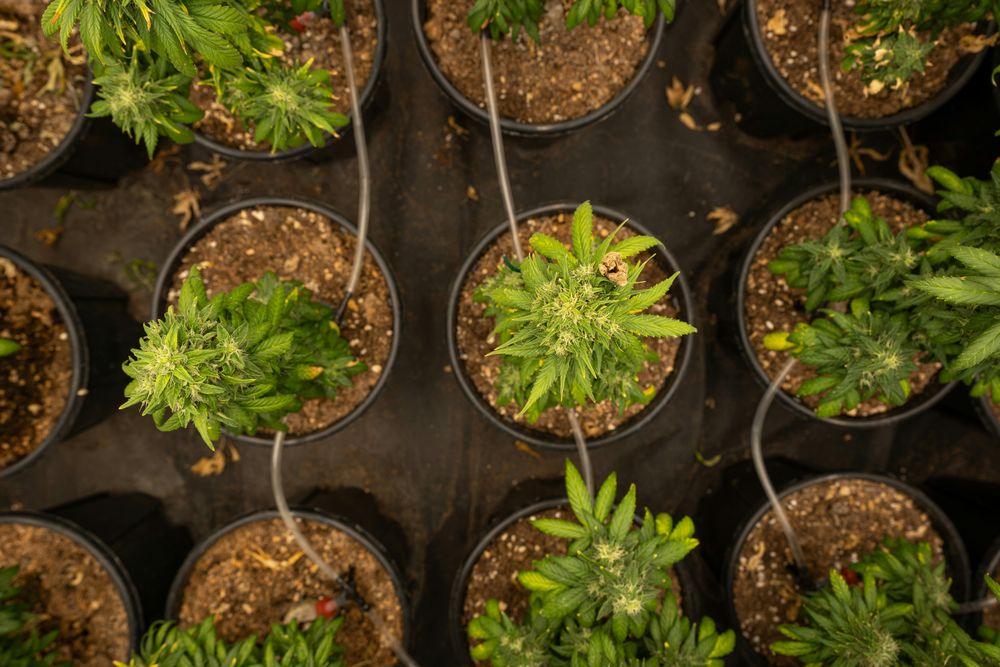
Cannabis plants require specific soil nutrient levels for optimal growth, and these needs can vary based on the strain. Understanding the basics of soil composition and nutrient requirements is essential for a good harvest.
In general, cannabis plants need nutrients that fall into two distinct categories: primary and secondary.
Primary Nutrients
The primary macronutrients—nitrogen (N), phosphorus (P), and potassium (K)—are vital for healthy cannabis plants. Nitrogen promotes lush green foliage, phosphorus is crucial for strong roots and flowering, and potassium supports overall plant growth, but can cause toxicity if too abundant.
Secondary Nutrients
The secondary nutrients cannabis plants need are calcium (Ca), magnesium (Mg), and sulfur (S). Calcium strengthens cell walls, magnesium is essential for photosynthesis, and sulfur aids in amino acid formation and enzyme function.
The Best Nutrient Ratios For Cannabis Plants
The NPK ratio, or the balance of nitrogen (N), phosphorus (P), and potassium (K), is crucial for cannabis cultivation. It varies across different growth stages to meet the plant’s evolving needs.
As for the actual amounts, use the recommendation given on the packaging of the nutrients, and cut them in half. That is a good starting point. This article covers how often to feed your plants.
Early Vegetative Stage
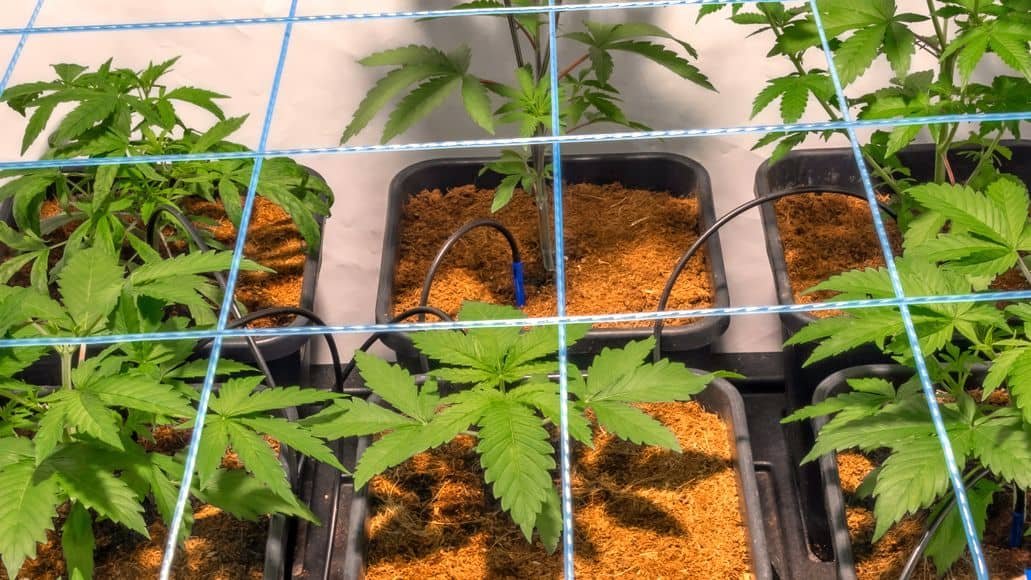
In this phase, cannabis plants require a higher concentration of nitrogen to support vigorous growth and the development of lush green foliage. An ideal NPK ratio for this stage is around 3:1:2. It is also essential to maintain soil pH levels between 6.0 and 6.5 to ensure optimal nutrient uptake.
Mid Vegetative Stage
As the plants continue to grow, they still need a high nitrogen supply, but the demand for phosphorus and potassium begins to increase. A ratio of 4:2:3 helps sustain robust vegetative growth. pH levels should be kept consistently between 6.0 and 6.5.
Late Vegetative Stage
In the late vegetative stage, the plants are preparing for the transition to flowering. An NPK ratio of 3:2:4 supports this shift, gradually increasing potassium levels. You must also maintain the pH within the optimal range of 6.0 to 6.5.
Early Flowering Stage
During early flowering, cannabis plants need less nitrogen and more phosphorus to promote healthy bud development. A ratio of 1:3:2 is ideal. The pH should be adjusted slightly to 6.2 to 6.7 to enhance phosphorus availability.
Mid-Flowering Stage
The demand for phosphorus peaks at this stage, because the plants need it to support bud formation and resin production. An NPK ratio of 1:3:2 continues to be effective. Maintain the pH levels between 6.2 and 6.7 to ensure optimal nutrient uptake.
Late Flowering Stage
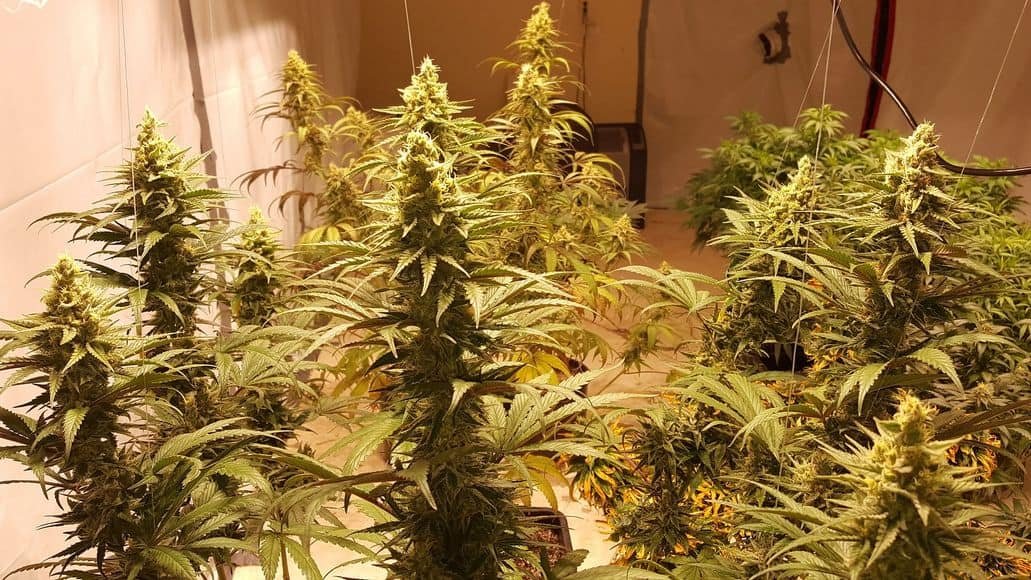
In the final phase, cannabis plants need less nitrogen, phosphorus, and potassium to strengthen the buds. A ratio of 0:3:3 is appropriate. Keeping the pH between 6.2 and 6.7 is essential for finishing the flowering stage effectively.
Tips For Adjusting NPK Ratio
You may need to adjust the ratios somewhat,if you notice issues with your plants. Here are some tips for monitoring for nutrient issues and adjusting nutrient ratios.
Observe The Plant’s Appearance
Monitor your plants for signs of nutrient imbalances.
- Low nitrogen results in poor leaf health. It can cause leaves to turn lime green or yellow, curl, and fall off. On the other hand, excess nitrogen results in drooping, poor bud formation, and an “eagle claw” appearance.
- High phosphorus levels can lead to brown leaves, while low phosphorus levels cause damaged lower leaves with shiny or dark blue, grey, or green hues, purple veins, and curling.
- Too little potassium can cause the yield to drop and also result in a burnt appearance on the lower/older leaves. Excess potassium tends to increase the plant’s susceptibility to cold.
Use Soil Testers
Invest in analog or digital meters to test soil NPK levels accurately. This helps you determine the current nutrient status and adjust accordingly.
Choose Appropriate Fertilizers
Based on your observations and test results, select fertilizers that match your plants’ needs. We will discuss the best fertilizers in the next section.
Organic Or Synthetic Fertilizers For Weed Plants
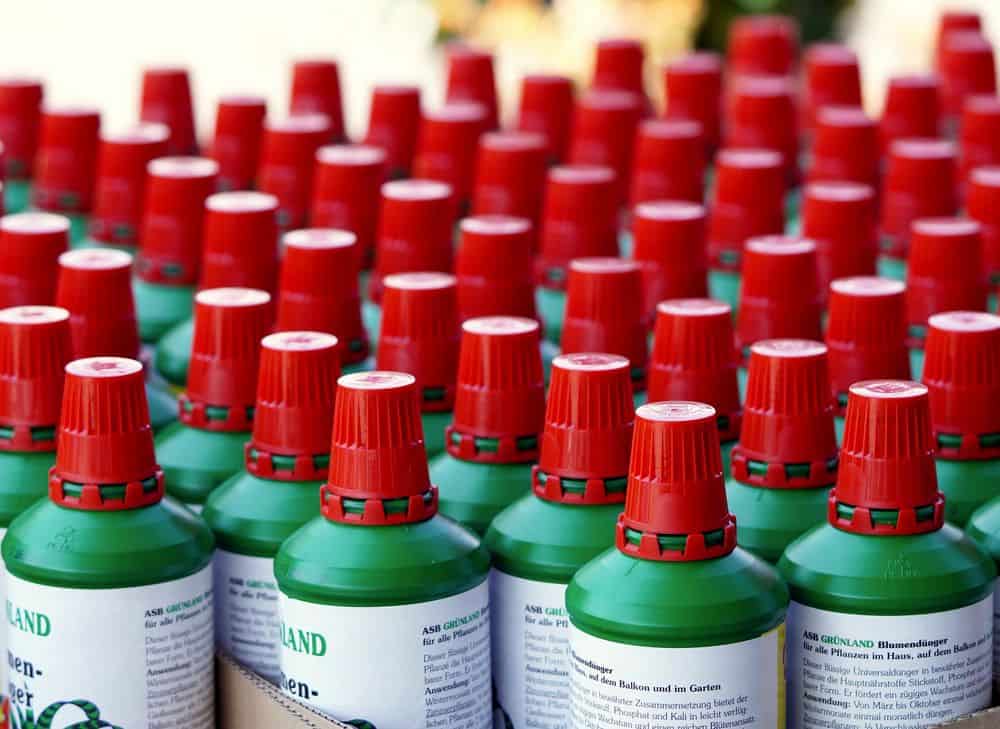
An important part of cannabis cultivation is the use of fertilizers, because they help enhance growth and yield. Fertilizers can be organic or synthetic.
Organic Fertilizers
Organic fertilizers, such as compost, worm castings, and bat guano, enrich the soil with natural nutrients, promoting healthy microbial activity.
They are eco-friendly and also yield better-tasting and more aromatic buds. They also produce enhanced highs. On the downside, they can be expensive, especially for large-scale harvests.
Synthetic Fertilizers
Synthetic fertilizers are available in various package sizes, which makes them economical for large-scale growers. They also contain precise nutrient ratios (N-P-K ratio) so you can control how much to use and avoid overfertilization.
This also helps you target specific issues in your crop. On the downside, they are harmful to our soil and waterways.
Both types of fertilizers are straightforward to use. You need to either mix them in the soil or with water for spraying on the plants.
Common Questions About Nutrients For Marijuana Plants
Next, we will answer some of the common questions we get concerning cannabis nutrients.
What Does Cannabis Need In Flowering?
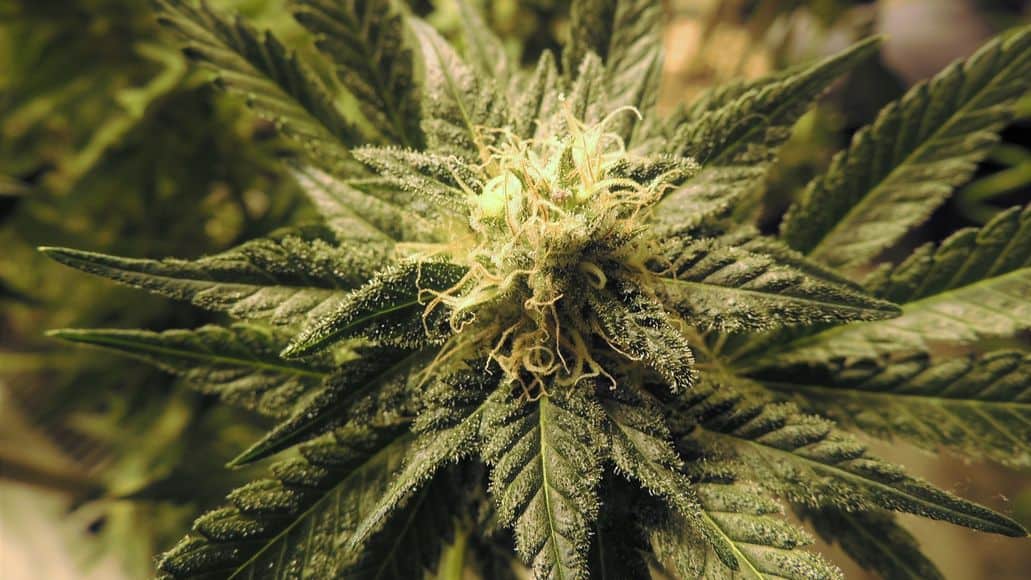
During flowering, cannabis needs magnesium and phosphorus for bud development, while nitrogen needs to be limited. In early to mid-flowering, as plants stretch and buds form, an NPK ratio of 1:3:2 is ideal.
During the ripening stage, shift to a 0:3:3 ratio to support final bud maturation. This ensures robust flowering and prevents nutrient imbalances that can affect yield and quality.
What Should I Feed Cannabis Plants During The Vegetative Stage?
During the vegetative stage, feed your cannabis plants with a base nutrient that is high in nitrogen but lower in phosphorus and potassium.
This promotes vigorous leaf and stem growth. An ideal NPK ratio for this stage is around 3:1:2. This ensures that the plant gets the necessary nitrogen boost for strong vegetative development while keeping phosphorus and potassium in check.
What Does Nitrogen Deficiency Look Like In Cannabis?
Nitrogen deficiency in cannabis manifests through several symptoms.
Initially, you might notice stunted growth as well as the yellowing of older leaves as nitrogen is translocated to new growth. The leaves may turn pale and eventually develop necrosis or dead or burned leaves.
Delayed flowering and die-off of lower branches are other signs of poor nitrogen, as the plant prioritizes vital parts. Pale leaves are another clear indicator, and as the deficiency progresses, the plant’s overall vigor may decrease and show reduced flower production.
It is important to address nitrogen deficiency promptly to prevent these issues and ensure healthy plant development.
Does Cannabis Need Calcium in Flower?
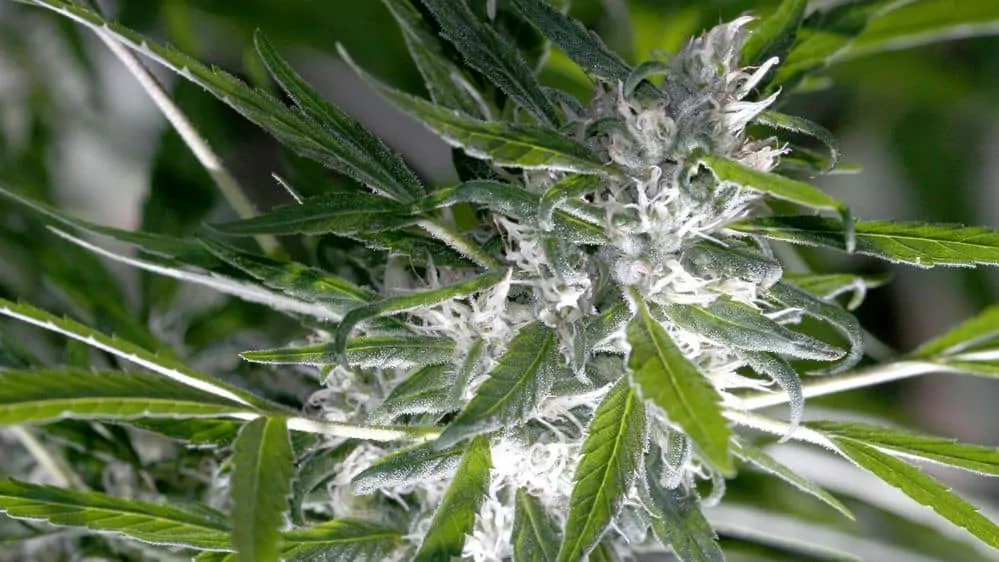
Yes, cannabis needs calcium during the blooming stage. Calcium requirements are particularly high during the vegetative and fruiting stages. In fact, cannabis plants need calcium throughout their entire growing cycle, from the start of the vegetative phase to the end of flowering.
This nutrient plays a crucial role in cell wall development, nutrient uptake, and overall plant health. It is important to ensure a consistent calcium supply to prevent deficiencies that can lead to weaker plants and reduced yields.
What Causes Iron Deficiency In Cannabis?
The use of reverse osmosis (RO) or heavily filtered water could result in an iron deficiency in cannabis plants. Similarly, issues with magnesium, calcium, or excess copper can also cause iron deficiency in cannabis.
While iron deficiency typically does not produce visible symptoms, severe cases can result in angular chronic lesions on leaves, leaf whitening, and stunted growth. Ensure balanced nutrients and appropriate water quality to prevent these issues.
Cannabis Nutrients: Final Thoughts
Understanding and managing soil nutrients is crucial for cultivating healthy and high-yielding cannabis plants.
By carefully balancing primary nutrients like nitrogen, phosphorus, and potassium, and ensuring an adequate supply of secondary nutrients such as calcium, magnesium, and sulfur, you can optimize plant growth at each stage of development and bud growth in the later stages.
Monitoring plant appearance and using soil testers can help detect and correct nutrient imbalances. By following the guidelines above, you can achieve robust, high-quality cannabis harvests.
Leave a Reply